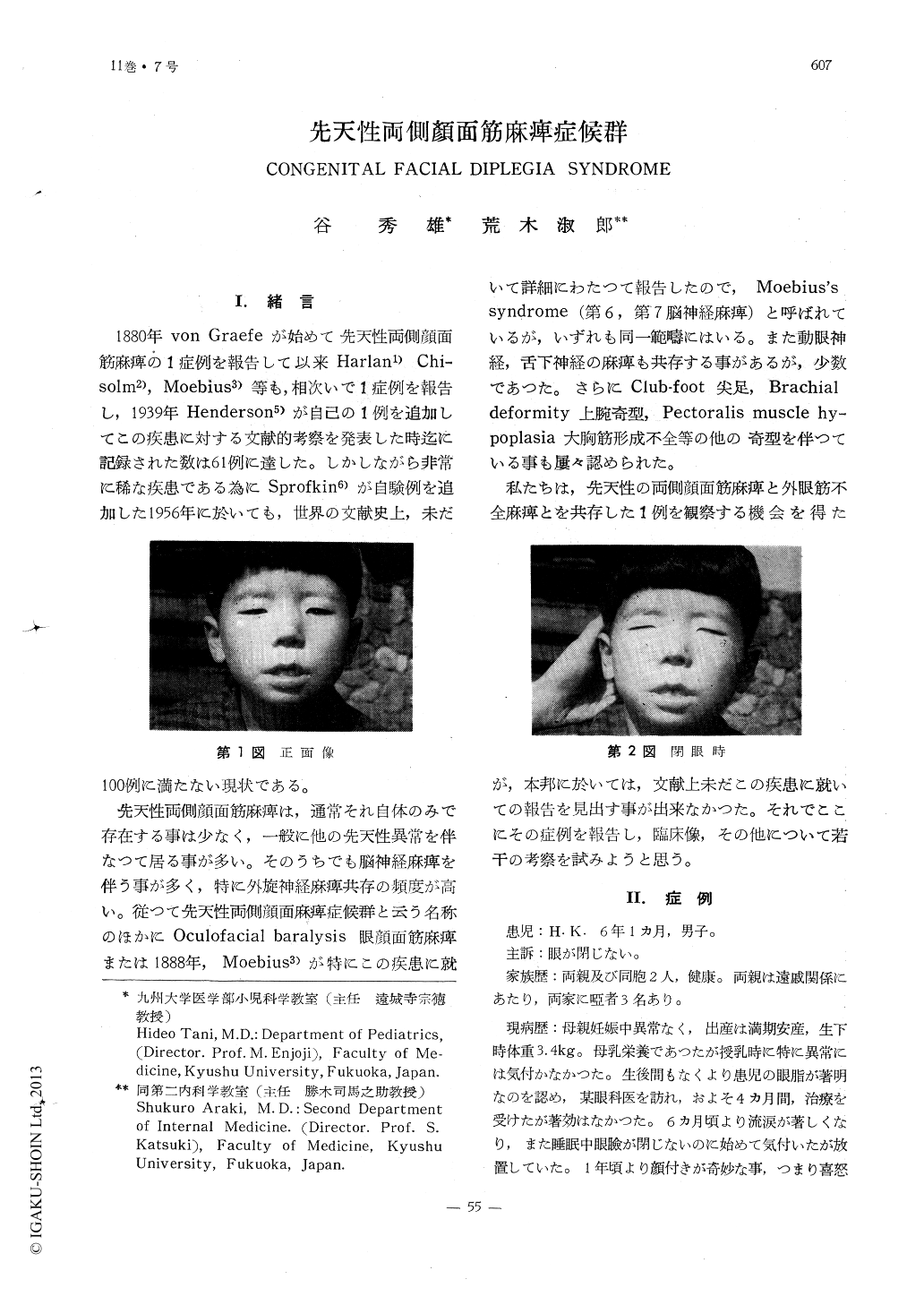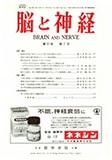Japanese
English
- 有料閲覧
- Abstract 文献概要
- 1ページ目 Look Inside
I.緒言
1880年von Graefeが始めて先天性両側顔面筋麻痺の1症例を報告して以来Harlan1)Chi-solm2),Moebius3)等も,相次いで1症例を報告し,1939年Henderson5)が自己の1例を追加してこの疾患に対する文献的考察を発表した時迄に記録された数は61例に達した。しかしながら非常に稀な疾患である為にSprofkin6)が自験例を追加した1956年に於いても,世界の文献史上,未だ100例に満たない現状である。
先天性両側顔面筋麻痺は,通常それ自体のみで存在する事は少なく,一般に他の先天性異常を伴なつて居る事が多い。そのうちでも脳神経麻痺を伴う事が多く,特に外旋神経麻痺共存の頻度が高い。従つて先天性両側顔面麻痺症候群と云う名称のほかにOculofacial baralysis眼顔面筋麻痺または1888年,Moebius3)が特にこの疾患に就いて詳細にわたつて報告したので,Moebius'ssyndrome (第6,第7脳神経麻痺)と呼ばれているが,いずれも同一範疇にはいる。また動眼神経,舌下神経の麻痺も共存する事があるが,少数であつた。さらにClub-foot 尖足,Brachialdeformity上腕奇型,Pectoralis muscle hy-poplasia大胸筋形成不全等の他の奇型を伴つている事も屡た認められた。
Congenital facial diplegia syndrome, Moe-bius's syndrome or congenital oculofacial pa-ralysis are rare anomalies, manifesting of paralysis or paresis of the muscles of the face and of both external rectus muscles. The syndrome occassionally is accompanied with other congenital malformations such as club foot, mental defect and epilepsy so on.
A 6-year & 1 month old boy was admitted to the Pediatric Dept. of Kyushu University on Sept. 4th 1958 with chief complaint of diffi-culty in closing eyes. The delivery of this boy was uneventful and there were no abnorma-lities found at birth. Soon after he began to have excessive secretions in both eyes. At 6 months old, marked tearing and at 1 year old, mask like face were first noted. They have persisted without having any signs of prog-ression. On examination, mask-like face, dif-ficulty in closing eye-lids (left more than ri-ght), bilateral 6th nerve paralysis, other ex-ternal ocular muscles paresis (probably 3rd nerve), monotonous voice and excessive sali-vation were found. No other abnormalities were present physically or neurologically. La-boratory data revealed within normal limits.

Copyright © 1959, Igaku-Shoin Ltd. All rights reserved.


